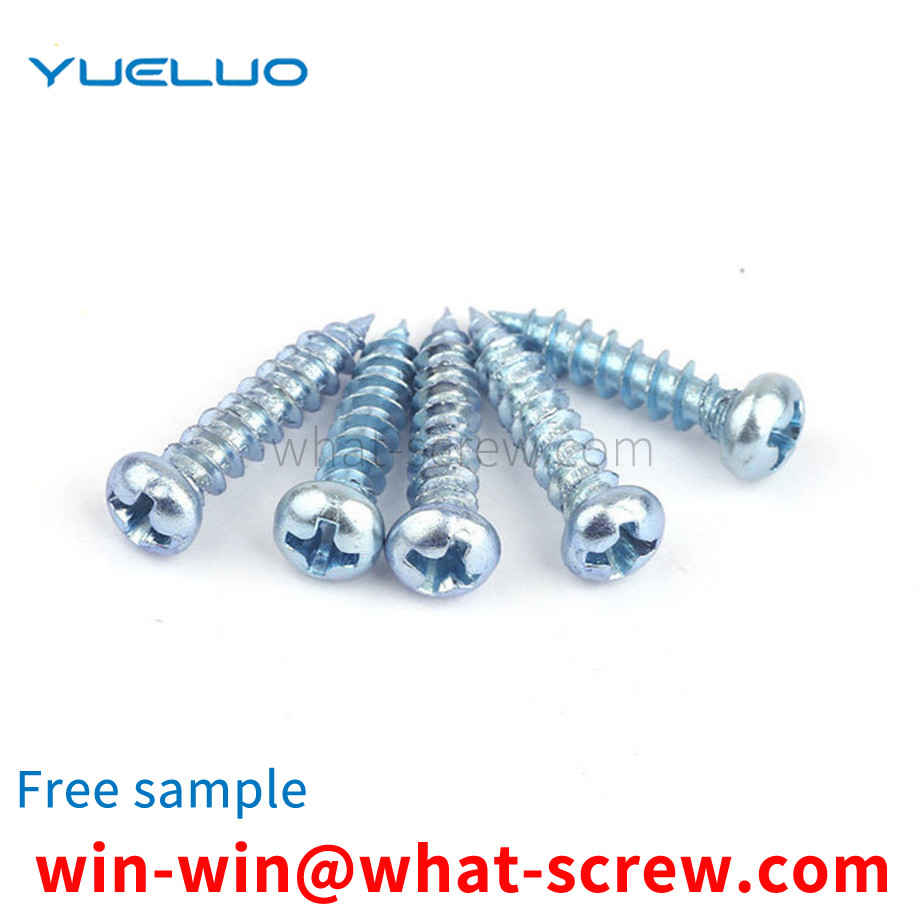Screws are a common fastener widely used in machinery, electrical appliances and buildings. The general material is metal or plastic, it is cylindrical, and the grooves engraved on the surface are called threads. Due to the different units of measurement, the representation methods of various threads are also different. For example, M16-2X60 represents a metric thread. His specific meaning is that the nominal diameter of the screw is 16MM, the pitch is 2MM, and the length is 60MM. Another example: 1/4—20X3/4 means the inch thread, what he specifically means is the nominal diameter of the screw It is 1/4 inch (one inch = 25.4MM), there are 20 teeth on one inch, and the length is 3/4 inch. In addition, if you want to express American screws, UNC and UNF are usually added to the back of the British screws to distinguish between American coarse teeth or American fine teeth.
The cylindrical pin is mainly used for positioning and can also be used for connection. It is fixed in the pin hole by means of interference fit. Cylindrical pins used for positioning are usually not subject to load or a small load, the number is not less than two, distributed in the symmetrical direction of the overall structure of the connected parts, the farther the better, the pin is in each connected part The length is about 1-2 times the minor diameter. Cylindrical pins can also be used as shafts, and a straight shaft can also be used as cylindrical pins or even centering pins. So what's the difference between a shaft and a pin? The shaft can be used to transmit torque, bear bending moment and torque, and the cylindrical pin can be used for positioning, bear extrusion force and shear force. In a sense (such as small equipment), cylindrical pins can also be used as shafts.
When people use a screwdriver and other tools to screw a screw into an object, they need one hand to hold the screw and the other to hold the screwdriver and other tools, which brings some inconvenience to the user; especially when the screw is not correctly set, it will cause work and time delays, affecting work efficiency. .
Guangdong Yueluo Hardware Industry Co., Ltd. is a kind of locking nut, which includes a nut, the bottom of which is circular, the middle is hexagonal, the top is circular, there is a bolt hole in the center, the side wall of the bolt hole is threaded, and the top of the nut is Set up several squash notches. According to the locking nut of the preferred embodiment of Guangdong Yueluo Hardware Industry Co., Ltd., the number of flattening notches is three. The three flattening gaps can be used as the focal point of the tightening tool and the clamping place of the anti-loose gasket bayonet, and the structure is simple and can be formed by die stamping at one time.
The main operation method of the embedded knurled copper nut of the lock nut is injection molding. After heating, it is embedded into the plastic part or directly injection molded. If injection molding is used, the melting point of P/NYLOY/PET is above 200°C. , After the embedded nut is hot melted into the plastic part, the temperature rises rapidly. After injection molding, the plastic body rapidly cools and crystallizes and hardens. If the embedded nut temperature is still at a high temperature, it may fall to the place where the copper nut contacts the plastic part. Start to loosen or crack. Therefore, copper nuts are used instead of carbon steel nuts in the injection molding of embedded nuts.
We have many years of experience in the production and sales of screws, nuts, flat washers, etc. The main products are: pressure rivet pins, large flat head rivets, 304 stainless steel nuts, cross countersunk head and other products, we can provide you with suitable fastener solutions for you .



















 Service Hotline
Service Hotline




